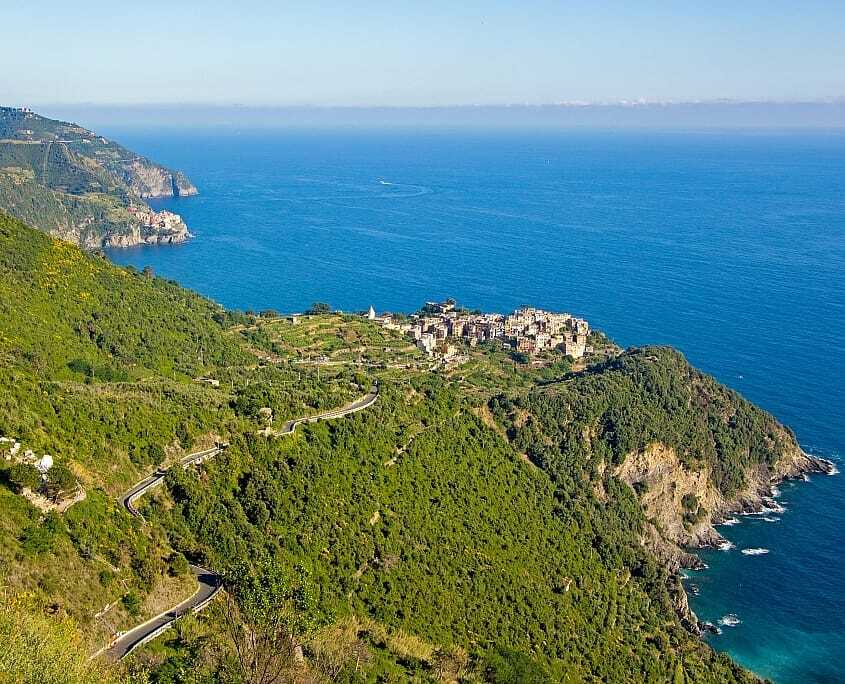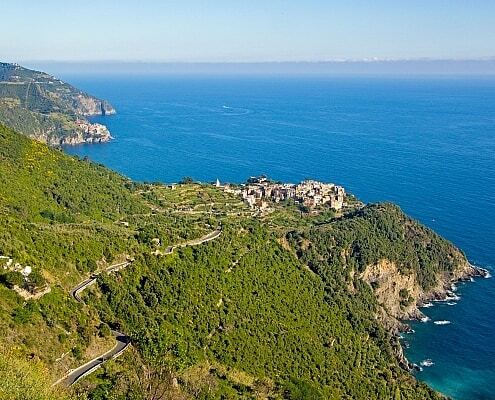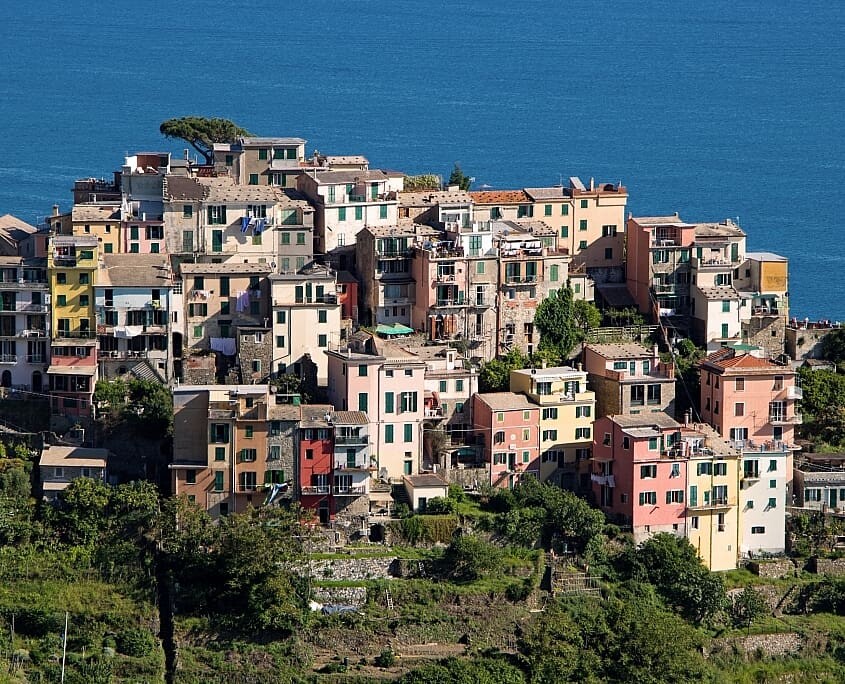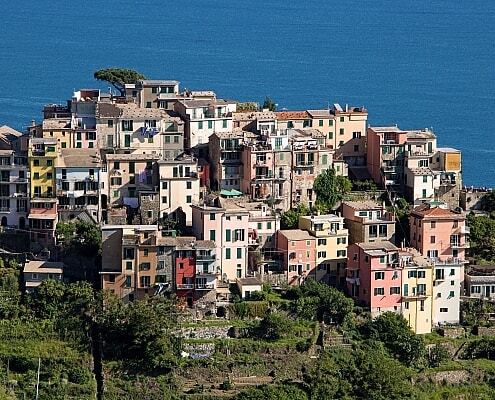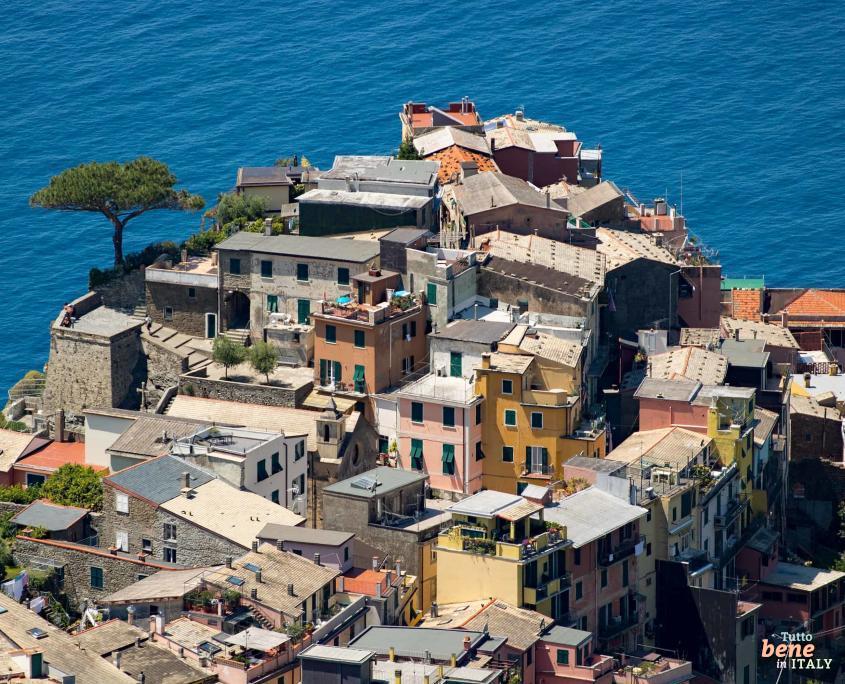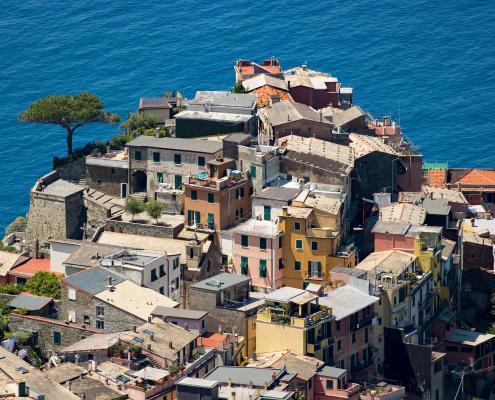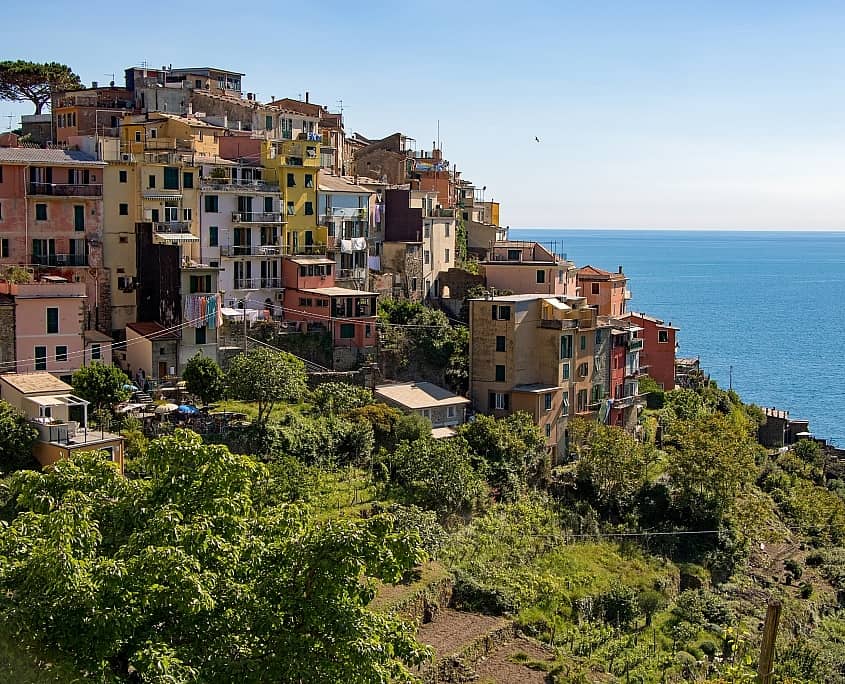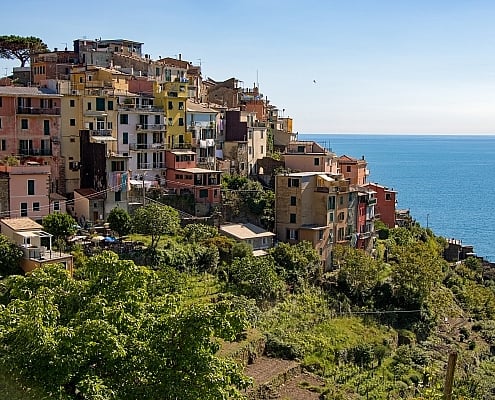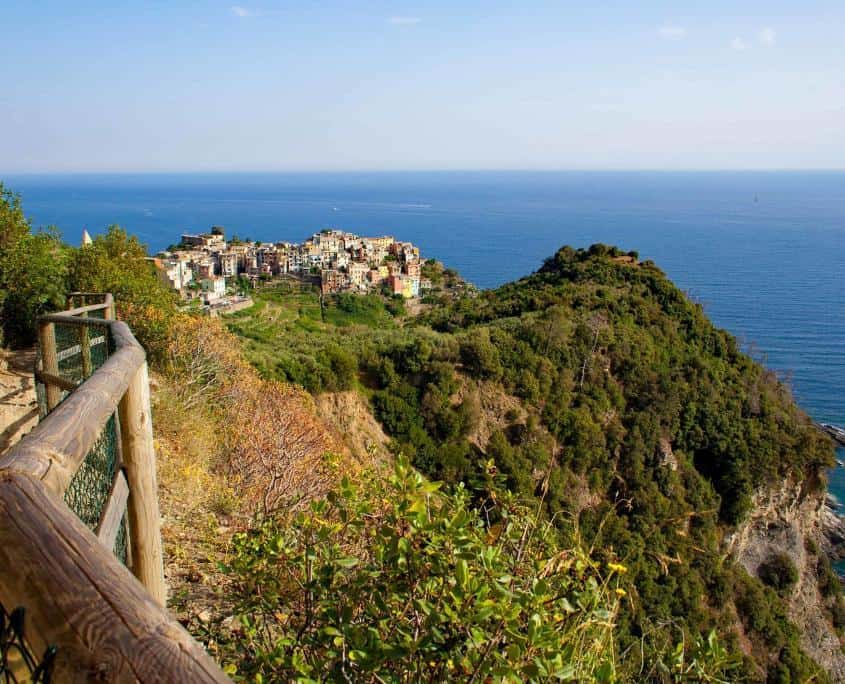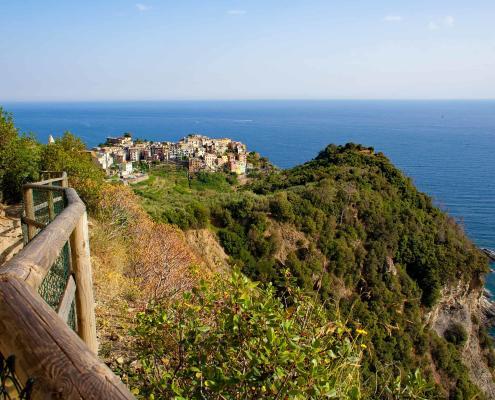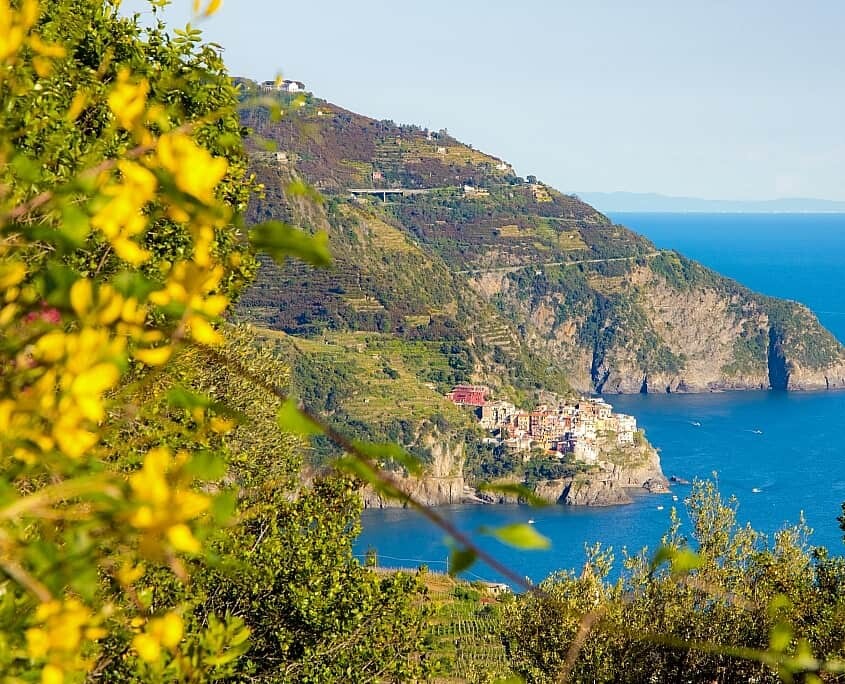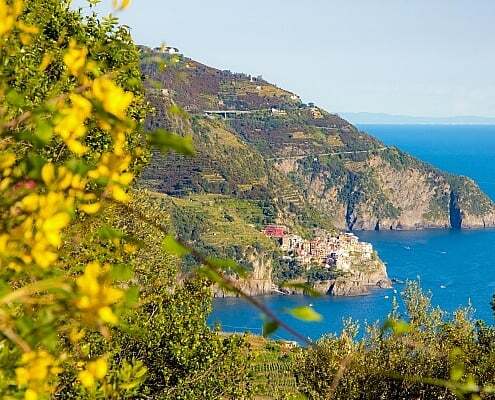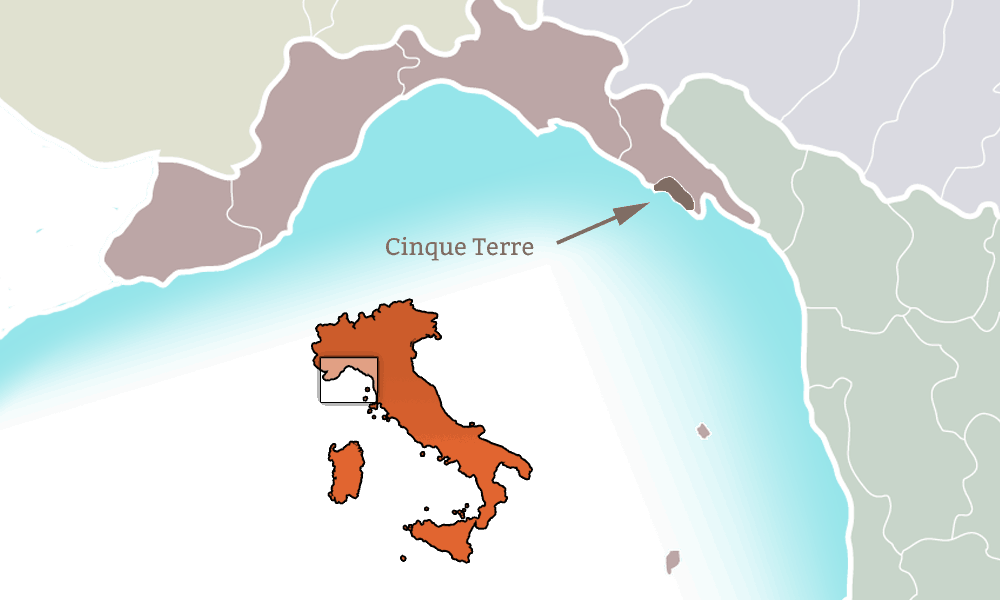Corniglia is the middle of the five villages and differs from its neighboring towns in that it lies on a rock above the sea and therefore does not have its own port. The village proudly towers above the sea at a height of about 100 m and offers a wonderful view of the coast and sea.
From the sea, Corniglia shines like a pearl on a rock. A terrace offers a wonderful view over the sea and to the other four places of the Cinque Terre.
The characteristic and picturesque village can be reached via the serpentine road, on the outskirts there is a parking lot. There is no hotel here, only private rooms.
Like all places in the Cinque Terre, the narrow streets of Corniglia are closed to traffic.
The train station is below the village. You climb the place via a brick staircase with 377 steps, the “Lardarina”.
What To Do and See In Corniglia?
Corniglia
As picturesque as Corniglia appears today, people of nature once had to wrestle with their treasures. Wine growing on steep slopes is typical for this area. Throughout the winter, the trees carry oranges and lemons and, together with the pastel-colored facades of the houses, add color to life.
Church San Pietro
The Cinque Terre hiking trail goes right through Corniglia, just past the Church of San Pietro from 1334.
The church of San Pietro was built on the remains of a chapel from the 11th century and shines with a facade of white and pink Carrara marble. The original structure with the three marble figures by the Master Campionesi is still completely intact. The church consists of three naves and has a Baroque style on the inside and Gothic style features on the outside.
Every year on June 29, the patron saint of San Pietro in Corniglia takes place. The procession winds its way from the church of San Pietro through the streets of the village to the Santa Maria terrace. On the occasion of this festival there is a specialty rice cake, baked from rice, cheese and eggs.
Largo Taragio
The Piazzetta Largo Taragio, the central lively square, is dominated by the Monument to the Fallen. With ice bars and restaurants, the square invites you to meet and linger and is lively until late at night.
Santa Maria Terrace
If you cross the piazza and follow via Fieschi, you will reach the Santa Maria terrace at 90 m above sea level. It goes steeply down and the view is breathtaking.
Oratorio Santa Caterina
The Oratorio dei Disciplinati di Santa Caterina from the 18th century rises above the Piazzetta Largo Taragio, at the highest point in town.
If you climb the long staircase you come to the small square where the last remains of the tower of the fortress from 1556 can still be seen. From up here you have a wonderful view to Manarola.
Sanctuary San Bernardino
Paese = village Divino = saint Di vino = of the wine
San Bernardino reveals a fantastic view over Corniglia and the sea.
In San Bernardino you rarely meet tourists, in the small, simple bar of the consortium mostly locals sit chatting every day. This is where you can enjoy the famous Cinque Terre wine with a view over the vineyards.
The pilgrimage church can be reached on foot along the Madonnas path, as well as from Corniglia and Vernazza
Beach in Corniglia
A staircase leads from Piazzetta Largo Taragio down to the sea. A tiny harbor can accommodate a handful of fishing boats and a small bathing spot.
Another beach, Guvano Beach, can be reached from the other side of Corniglia. There are two ways: From the train station you walk through a former railway tunnel (toll) to the unguarded Guvano beach. Below the former railway line is the long, beautiful stone beach, which attracts many boat tourists in summer. Unfortunately the beach is closed due to the risk of falling rocks.
History of Corniglia
The origins of Corniglia go back to Roman times. The name comes from the Gens Cornelia family, who owned the property and made a renowned wine. During the excavations amphorae with the inscription Cornelia were found in Pompeii.
In 1211 Corniglia was mentioned in a document. The village belonged to the order of the Fieschi until then and later passed to the Republic of Genoa. Under the rule of Genoa, the fortress and the city wall were built to protect against pirates and unbelievers. Remains of the fortress can still be seen in some places in the highest part of Corniglia.




